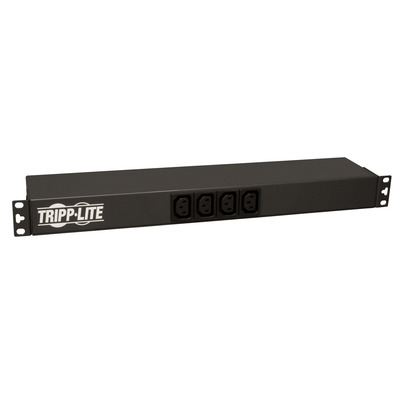Power management is essential for ensuring uptime and operational efficiency in data centers and server rooms. A Power Distribution Unit (PDU) plays a crucial role by providing reliable power distribution to rack-mounted servers, networking equipment, and other critical IT hardware. But what is a PDU in a server rack and how does it factor into efficient and reliable power delivery?
This blog will discuss the function of rack PDUs, the available types, and the relevant integration with uninterruptible power supply (UPS) units.
What is a PDU?
A Power Distribution Unit (PDU) is a box-shaped device used to distribute electrical power to multiple electronic devices from a single input. It can be thought of as a stripped-down power strip that is used in a server environment, only it generally has a custom purpose and enhanced capabilities for IT infrastructures.
Once it is installed in a rack, it becomes a PDU used in a server rack environment, distributing power to all the rack-mounted IT infrastructure in an organized and manageable format.
Types of Rack PDUs
There are a variety of types of rack mountable PDUs, each serving a specific need for power management:
Basic Rack PDUs
These PDUs only distribute power to IT equipment without monitoring or control capabilities. Basic PDUs are suitable in cases where cost and simplicity are most important.
Metered Rack PDUs
Metered PDUs include a local LED display that shows load levels in real-time, allowing for greater load balancing and overload avoidance by the IT administrator.
Monitored Rack PDUs
With a network interface, monitored PDUs provide remote visibility into power usage and monitoring capability of environmental conditions.
Switched Rack PDUs
Switched PDUs (like the Tripp Lite Switched PDU) add remote monitoring and outlet control, which allows for turning each outlet on or off remotely. This allows IT administrators to reboot servers or be more intelligent with power management using the rack mount PDU.
How PDUs Work with UPS Systems?
A Power Distribution Unit (PDU) often works with an Uninterruptible Power Supply (UPS). A UPS prevents IT equipment from losing power and protects it from voltage spikes, but the rack PDU takes the conditioned power from a UPS and distributes it to the devices in the rack. Combined, the UPS and PDU are major contributors to the uninterrupted, stable, and safe operation within the server environment.
For example, during a power failure, the UPS will supply the backup power, but the power distribution unit rack mount is the piece of equipment that will take that backup power and distribute it safely among all of the connected devices in the rack.
Why Rack PDUs Are Important?
Expanded access: Rack PDUs accommodate high-density power profiles in the context of large data centers that are expanding quickly.
Increased safety: More sophisticated PDUs will feature fuses, circuit breakers, and overload protection.
Actionable data: Metered and monitored rack PDUs will give data center managers the ability to track energy usage statistics to plan for real estate down the road.
Remote access: Switched rack PDUs will allow rack managers to remotely operate and perform on/off power cycling, which is a huge time saver when troubleshooting IT Equipment issues and outages.
How to Select a Rack PDU?
When selecting a rack mountable power distribution unit (PDU) you will need to consider:
- Number of outlets
- Input and output voltage
- Form factor (horizontal or vertical)
- Monitoring and control features
- Compatibility with UPS systems
Final Thoughts
In comparison to a power strip, a Rack PDU does much more and is a vital component in providing dependable, efficient and consistent power to your IT environment. No matter if you have a simple rack PDU or an advanced switched rack PDU, it is important to choose and purchase the best Power Distribution Unit for server rack applications to achieve the best performance, reduce downtime and protect your IT environment.


